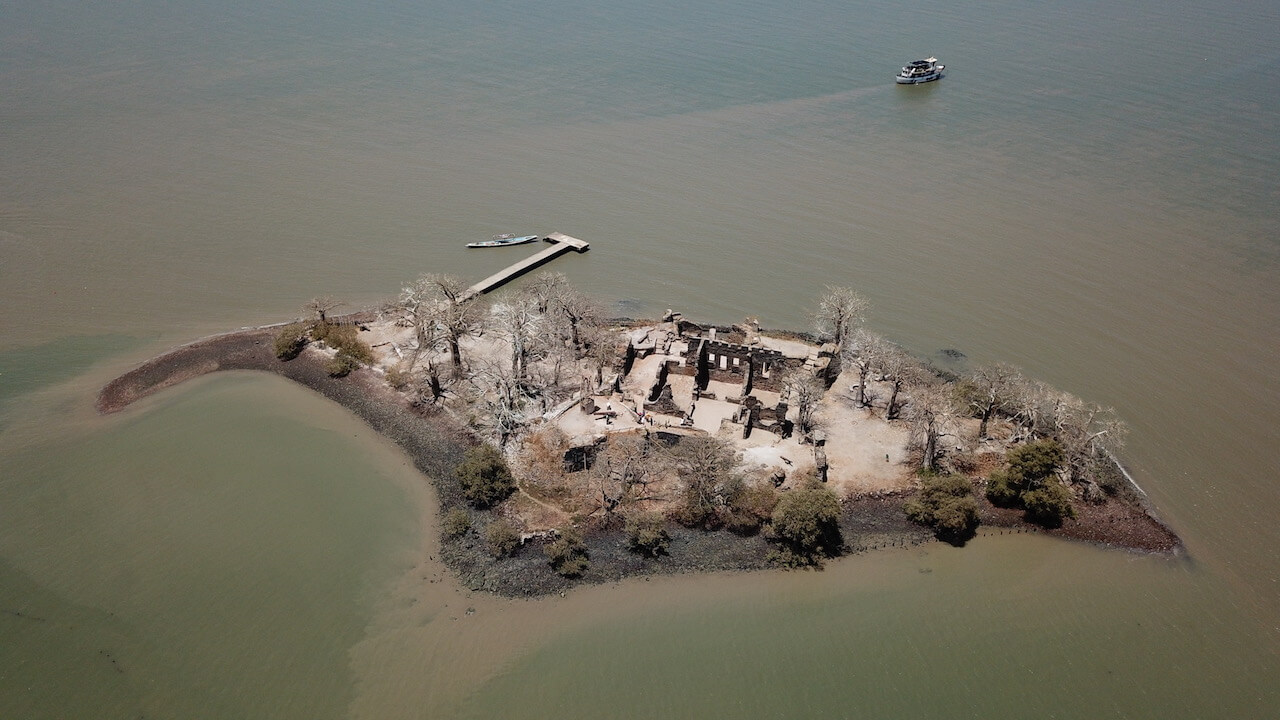Every day for 30 days we will be featuring a museum object that has inspired or intrigued us, in the hope that “an object a day keeps the doctor away.” We love creating exciting, meaningful storytelling through engaging experiences, but still firmly believe that it is hard to beat the thrill of being in the presence of authentic artefacts. Today’s object is: James Island.

Can a place be an object? I think in this case, yes.
The ruins of James Island at the mouth of the River Gambia was a staging post for the slave trade from Africa. It was the last bit of African soil that many slaves saw before being subjected to the inhuman conditions of the transatlantic slave ships to the Americas.
I visited 20 years ago and, speaking as a museum designer, I might be expected to want a state-of-the-art visitor centre here. But the crumbling stones of the abandoned fort and the rusted iron rings embedded in the ground to which human beings were chained deliver an emotional punch to the gut that no 360º show could. They speak of the gross immorality of colonial power at its callous worst. But above all they speak of sadness, of the last point of contact for hundreds of thousands of people with everything dear to them.
Now a UNESCO world heritage site and sometimes called Kunta Kinteh Island, a trip to the James Island is usually done as part of a ‘Roots Tour’ (after the novel of the same name by Alex Haley), which also includes the nearby village of Juffure. It is in a relatively good state of conservation, though the wall on the seaward side is suffering from sea erosion. There needs to be an ongoing maintenance monitoring and conservation effort to allow these ruins to have the best chance of survival and avoid further natural deterioration.
